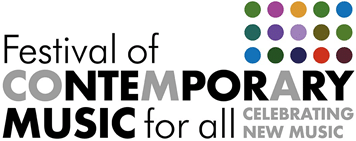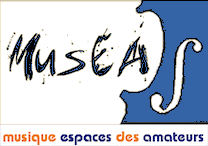Musique contemporaine
MusEA se donne comme objectif de favoriser la participation des musiciens à la musique contermporaine non pas comme un exercice purement intellectuel, mais bien par la pratique d’ensemble. Nous organisons des rencontres avec des compositeurs permettant d’expérimenter différents modes de jeu et d’appréhender l’univers sonore qu’ils ou elles proposent. MusEA est aussi commanditaire d’oeuvres crées par ses ensembles adhérents sous la direction artistique de notre équipe professionnelle et en contact direct avec le compositeur concerné.
Pour en savoir plus, regardez notre reportage “Ces musiciens amateurs qui jouent du contemporain” :
NOS COMMANDES D’ŒUVRES EN COURS
En 2024, nous avons déjà engagé deux commandes auprès de Laurent Durupt et de Juan Arroyo.
Laurent Durupt : Ce compositeur a animé un atelier mariant ressources numériques et instruments classiques lors d’un stage de MusEA à Ivry-sur-Seine en juillet 2023. Une commande est en cours pour un ensemble d’adhérents de MusEA composé de clarinette, flûte, piano et harpe. Laurent Durupt est diplômé du CNSMDP en piano, musique de chambre, analyse, contrepoint de la Renaissance, improvisation et composition. Il remporte plusieurs prix de concours internationaux de piano (dont Grossetto et Pordenone, Italie), de musique de chambre (à Cracovie et Paris) et de composition (Tenso Young Composer Award). Ses principaux professeurs sur Frédéric Durieux, Allain Gaussin et Philippe Leroux pour la composition.
Juan Arroyo : Ecoutez le quatuor de ce compositeur de renom basé sur le principe de « l’hybridation », une pièce basée sur le sens caché des mots et des notes…
Notre base de données de musique contemporaine
Rendez-vous sur notre page MusiCréAm pour consulter notre catalogue en ligne de musique de chambre contemporaine : pièces dont la première création a été réalisée par des amateurs ou qui sont recommandées à tous ceux qui cherchent à sortir des sentiers battus.
Notre dernier concert de créations

MusEA participe depuis quatre ans au festival biannuel Contemporary Music for All. Au cours de l’édition 2024 de cet événement international, nous avons présenté non moins de cinq créations issues de commandes MusEA. En partenariat avec l’Ecole Municipale de musique et de danse d’Ivry-sur-Seine nous avons pu apporter une contribution significative à la promotion de la musique contemporaine jouée par des amateurs. En écoutant l’enregistrement vous pouvez découvrir le travail de compositeurs reconnus et émergents notamment Juan Arroyo, Tristan Patrice Challulau, Géraud Chirol et Isabelle Lafitte, Giulia Lorusso et Jasmine Morris, Marie-Agnès Magalhaes, Vincent Guyot et Julien Malaussena.

